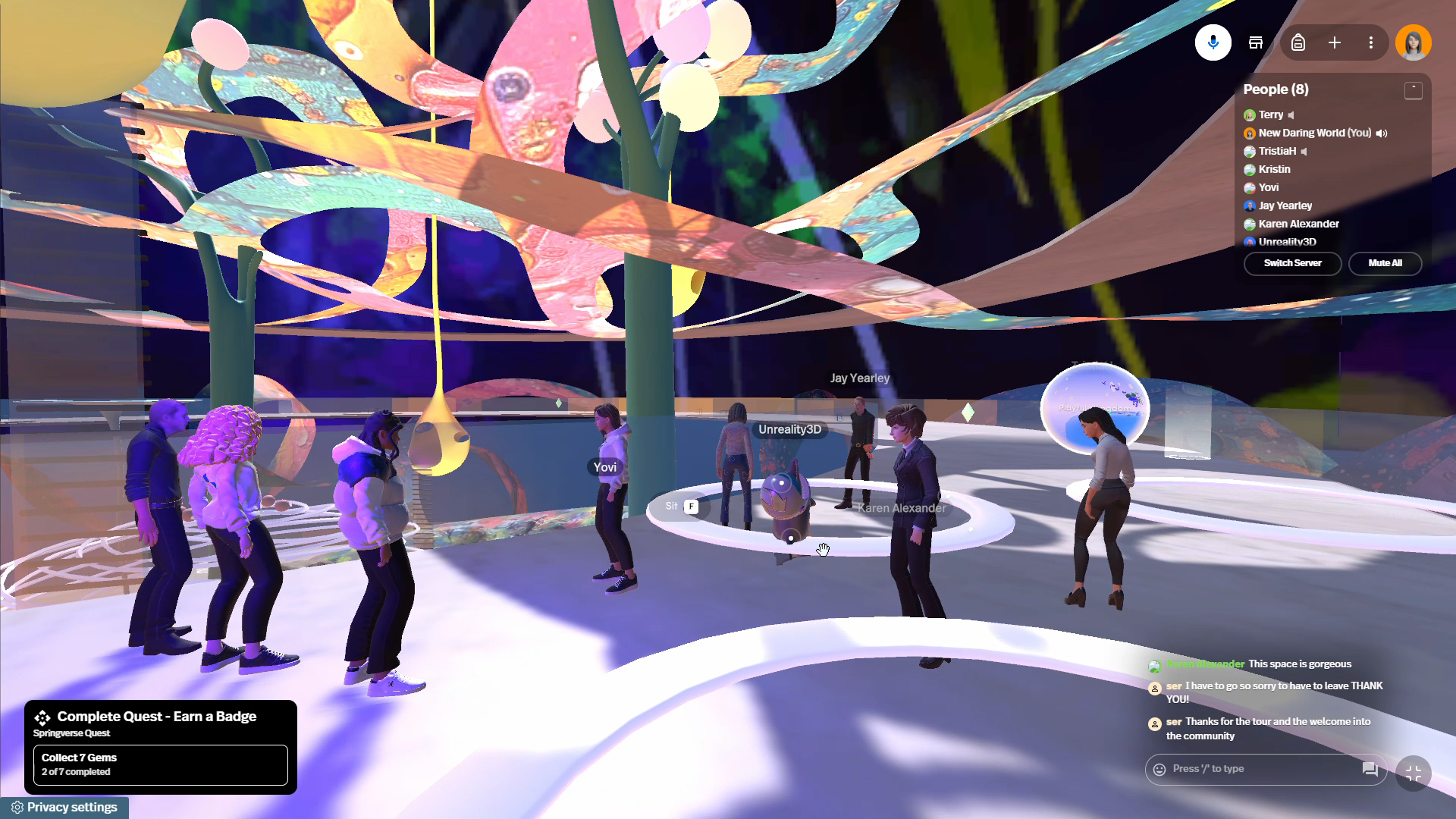Spatial Design
My design process blends organic and hard surface modeling, in VR or in traditional desktop software, allowing me to create a wide range of forms tailored to immersive experiences and virtual environments. I mindfully incorporate AI generations in my workflow where applicable.
My Process:
With 300+ hours immersed in VR, I sculpt models with an intuitive understanding of how they translate into virtual spaces. My primary tools include Gravity Sketch and Substance Modeler, which allow me to create immersive, purposeful designs. I complement this with traditional modeling skills in Blender, where I handle technical tasks like UV unwrapping and mesh optimization.
Sculpting in VR
Organic Surface Modeling: I specialize in crafting smooth, curved, and complex shapes inspired by the natural world, including human and animal anatomy. My work often incorporates flowing lines and intricate details that bring unexpected and dynamic perspectives. I use Gravity Sketch and Substance Modeler for this type of work.
My process:
Concept Development & Research – Understanding the project’s goals, audience, and interaction needs. I gather references, explore spatial storytelling approaches, and outline core themes.
3D Sketching & Blockout in Gravity Sketch – I start in VR to quickly establish the scale, proportions, and spatial flow of the environment. This allows me to design with real-world scale and presence in mind.
Refinement & Detailing in Blender & Unity – I refine forms, ensuring the world is visually compelling while maintaining interactive potential and usability.
Implementation in Spatial.io using Spatial SDK for Unity – Bringing the environment into Spatial.io, optimizing layouts, adding interactive elements, and ensuring it functions seamlessly across platforms.
Traditional 3D modeling
Hard Surface Modeling: For more mechanical or architectural elements, I rely on a precise, iterative process. This includes:
Subdivision Modeling for smooth, polished finishes.
Boolean Operations to cut, combine, and intersect objects into intricate designs.
Hard Edges and Creases to ensure defined transitions between surfaces.
Modifiers like bevel, mirror, and array for efficiency and uniformity.
I primarily use Blender for hard surface modeling.
Texturing With Intention
With a keen eye for intentionality and a human touch, I often hand-paint models to give them a unique and authentic feel.
When the project calls for it, I utilize procedural textures to enhance efficiency. Tools like Luma AI allow me to generate and curate options that fit the vision,

Implementation in Spatial.io using Spatial SDK for Unity
To make my models playable and ready for VR, web, or mobile, I bring them into Unity, setting up scenes and ensuring they work seamlessly across platforms.
I've worked primarily with Spatial SDK for Unity.
My mission is to craft environments that are not only visually stunning but also deeply functional, designed to foster meaningful interactions and memorable experiences.







